 NAA Record June 2011 NAA Record June 2011
|
|
|
Wright Brothers Memorial Trophy
Nominations Now Being Accepted
NAA is now accepting nominations for the 2011 Wright Brothers Memorial Trophy. The deadline for submissions is August 31, 2011.
Traditionally, aviators and those who work, serve, or recreate in our industry are sensitive to and knowledgeable about the history and heritage of the aviation/aerospace industry. It was in that spirit that NAA created the Wright Brothers Memorial Trophy in 1948 to highlight and acknowledge individuals who contribute to the history of aviation.
One of the most prestigious awards in aviation in the world, the Wright Brothers Memorial Trophy recognizes individuals who are pioneers, visionaries, public servants, business leaders, and explorers. While the criteria for the trophy is quite simple - it is awarded annually to a living American for "significant public service of enduring value to aviation in the United States" - it has been awarded to some of the most famous Americans in our nation's aerospace history.
Recipients include Neil Armstrong, John Glenn, Herb Kelleher, Joseph F. Sutter, Dwayne L. Wallace, Ira C. Eaker, Clarence "Kelly" Johnson, Barry M. Goldwater, Igor I. Sikorsky, Juan T. Trippe, Donald Douglas, James Doolittle, and Charles A. Lindbergh.
The recipient is selected by a panel of aviation and aerospace leaders. The 2011 Wright Brothers Trophy will be awarded at the Wright Memorial Dinner hosted by the Aero Club of Washington on December 16, 2011 in Washington, DC.
Click here for nomination guidelines and submission information.
|
|
Luncheon Series to Feature
Two Outstanding Speakers
The June Luncheon will feature U.S. Congressman John Kline (R-MN), Chairman of the Education and the Workforce Committee and member of the Armed Services Committee, and will be held on Tuesday, June 14, 2011.
Congressman Kline is the father of an Army Blackhawk pilot, the husband of a retired Army nurse, and a 25-year veteran of the Marine Corps, and considers it a personal priority to ensure governmet keeps
 | |
Jim Albaugh of Boeing to speak at July Luncheon. |
its promises to military veterans.
The July Luncheon will feature Jim Albaugh, Executive Vice President of The Boeing Company and President and CEO of Boeing Commercial Airplanes. Mr. Albaugh will speak on the challenges and opportunities facing the US aerospace industry on July 13.
Albaugh is responsible for all Boeing's Commercial Airplaneprograms and services, is a member of the Boeing Executive Council, and serves as Boeing's senior executive in the Pacific Northwest. He currently serves as board chairman of the Aerospace Industries Association (AIA), is a Fellow of the American Institute of Aeronautics and Astronautics and an elected member of the International Academy of Astronautics.
Both luncheons will be held at the Crystal Gateway Marriott with receptions starting at 11:30am, lunch and program will runs from Noon to 1:30pm.
Click here to register for the June (Kline) Luncheon.
Click here to register for the July (Albaugh) Luncheon.
The Luncheon Series is supported by Season Table Holders, including The Boeing Company, Cobham, DRS Technologies, EADS North America, GE Aviation, Lockheed Martin Corporation, Northrop Grumman Corporation, Rolls-Royce North America, UTC/Pratt & Whitney, Aurora Flight Sciences, and Curtiss-Wright Corporation.
The 2011-2012 Luncheon Series will kick off in early Fall; for information on season tables, email luncheons@naa.aero.
|
|
Brian Utley Inducted Into
Minnesota Aviation Hall of Fame
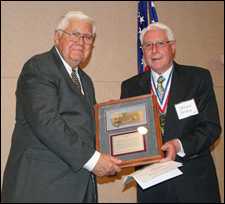 | |
Tom Schellinger (left), Chairman, Minnesota Aviation Hall of Fame presents induction certificate to Brian Utley (right).
|
Brian Utley, a member of the NAA Contest and Records Board since 2003, was inducted into the Minnesota Aviation Hall of Fame on April 30, 2011, in Bloomington, MN.
Utley was inducted along with seven other individuals at the annual banquet which honors Minnesota natives and other individuals who have contributed in a significant manner to the development, advancement and promotion of aviation in the state.
In attendance was Jonathan Gaffney, President of NAA, along with Art Greenfield, Director of Contest and Records, and Contest and Records Board members Kris Maynard and Sandy Anderson.
Click here to read the article on Mr. Utley in the August 2010 NAA Record newsletter.
|
|
United States Places in Three Categories
at 2011 FAI World Championships
for Model Aircraft
 | |
Alex Andriukov leans back to put as much energy as possible into his 30g motor by tightly winding the rubber band. |
The United States team put in a strong showing at the recent 2011 FAI World Championships for Free Flight Model Aircraft, held in Embalse, Argentina.
Alex Andriukov, who has won the world championship in the "Model Aircraft with Extensible Motors" F1B category three times, narrowly missed another championship title when his rubber-band powered model aircraft got caught in a tree during its descent, depriving it of another 20 seconds or so of time aloft that could have captured the championship. He finished second to the winner, Alexander Milyutin of Russia by 11 seconds.
The winner in this category receives the prestigious Wakefield Trophy, which is one of the oldest trophies in aviation. The trophy was created in 1911 by Charles Cheers Wakefield, founder of Castrol motor oil, and 2011 marked the 100th anniversary of the trophy.
The U.S. won the bronze medal in the F1B Team competition. The placings are determined by adding the times of the three competitors in this category allowed from each nation. In addition to Andriukov, the other team members included Dave Sacks and Bob Pymchek.
"We were pretty happy to come away with the bronze medal because we were further down in the standings going into the final flights," said Blake Jensen, manager of the U.S. world championship team. He has also managed the previous three teams in this competition, which is held every other year.
Building and launching these aircraft - all powered by tightly wound rubber bands - is a very scientific process that has advanced considerably in recent years. The rubber used is much higher quality and today's aircraft are made from carbon fiber and other lightweight materials. They can cost thousands of dollars.
"You have to get your plane in a thermal to get a good flight," Jensen explained - a good flight typically lasts several minutes. "If the thermal is not there or you hit a downdraft, the plane could be on the ground in a minute and a half."
Competitors use a range of sophisticated devices to detect thermals, and then try to launch their planes into it during the allotted timeframe they are given for launches.
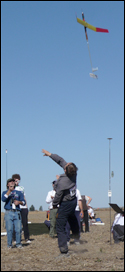 | |
Alex Andriukov hurls his F1B straight up into the air. An on-board timer releases the propeller blades 0.2 seconds after launch. |
Andriukov, for example, has an extremely sophisticated thermal detecting machine that measures wind speed and subtle changes in air temperature in four different locations with readouts on a laptop computer. The four sensors can be quickly moved to different locations if needed to find the best conditions.
The launch consists of throwing the aircraft straight up similar to a javelin, at which point the rubber-band motor kicks in, accelerating the plane up to 35 miles per hour during the first few seconds as it reaches a height of about 150 feet. The motor then continues to run up to about 40-seconds, typically reaching a total height of 350-700 feet depending on whether it catches a good thermal. The aircraft have rudders that put them into a series of slow turns as they fly slowly back to earth.
Many of the best competitors come from Ukraine and other nations of the former Soviet Union. "For Iron Curtain countries this was one of their big sports - they put a lot of money into their teams," Jensen said. In fact, Andriukov is from the Soviet Union and competed for the USSR and Ukraine before moving to the United States.
The United States team also placed second in the "Power Model Aircraft" F1C category. Team members included Faust Parker, Randy Secor, and Mike Roberts.
In this category, aircraft are powered by 2.5 cc engines that are allowed to run for 5 seconds to send the planes aloft - a typical plane can accelerate to approximately 85 miles per hour in that time and reach an altitude of over 500 feet. This category has seen many advancements in recent years.
"Ten years ago they were running wingspans up to 8-9 feet with a 7-inch propeller that rotated at 29,000 RPMs - the limit before the propeller tips go supersonic," Jensen explained. "Everyone knew if there a way to gear the engine differently they could get more power."
Today, many of the aircraft run geared engines at a 4:1 reduction ratio, which can generate more power as the engine runs up to 38,000 rpms while a larger 12-14 inch propeller rotates at only 9,500 rpms. They also have flaps or folding wings to control the flight. The folding wings are four feet long on takeoff and then unfold to nine feet in flight to allow a better glide back to earth. |
|
The Pioneer Spirit
The success of the National Aeronautic Association (NAA) over the past few years has been highlighted by major events, such as the award of the Collier Trophy to the far-thinking Sikorsky team which created the pioneering Sikorsky X-2. Such achievements make one realize how fortunate we are to have chosen to invest our lives in the air and space industry. 
It is little short of amazing to think that there could still be pioneers in the helicopter industry, 61 years after the first free-flight of Igor Sikorsky's successful VS-300. Yet that is the charm and the challenge of our chosen field. After years of development and the manufacture of tens of thousands of helicopters all over the world, the pioneering spirit is still required to make the next series of advances. Will they lead to more tilt-rotors or tilt-jets or to compound helicopters with retractable rotors? No one can say except the pioneers themselves, belting out their new ideas.
It is perhaps even more amazing that this "always pioneering" theme pervades virtually every aspect of our industry. A quick survey of the scene will reveal that several companies are competing for commercial space applications.
These are real ventures, not hypothetical schemes, as was demonstrated just a few days ago, when the futuristic SpaceShipTwo tested its radical "feathering" system for descent from altitudes previously unreached by commercial vehicles.
Scarcely a day passes without a new and pioneering unmanned aerial vehicle appearing that is designed to fly from an aircraft carrier's deck or stealthily loiter over an enemy hideout. Similarly, we see announcements of new all-electric aircraft, human-powered helicopters, and rocket-belt wings flying a perhaps too-daring pioneer over the Grand Canyon.
And this is just the surface of the system. Beneath these fascinating ventures is a structure of well-educated, far-seeing engineers who are also pioneering in every discipline - materials, electronics, structures, and human factors - everything necessary to make the great advances. And there is still another dimension; the incredible advances being made in the less spectacular but vital areas of maintenance and inventory control.
All this makes it completely understandable that NAA, riding the crest of the industry wave, is privileged to be able to identify, record, and reward the success of such persistent pioneering.
Walter Boyne
NAA Chairman
|
|
Air Sport Organization News
|
|
EAA Member Creates "Roadable"
Aircraft with Folding Wing Design
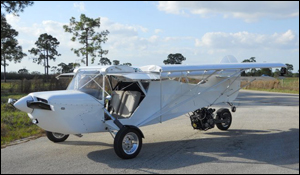 | |
The N10ZX roadable aircraft in "ground" configuration.
|
It's not every day that you see a road-legal airplane driving down the street.
But such a vehicle exists in Palm City, Florida, where Experimental Aircraft Association member Rick Johnson merged an Avid Magnum with Suzuki motorcycle to create a "roadable" aircraft.
The vehicle can be converted to or from an aircraft in about 20 minutes. When going from a road vehicle to an aircraft, the wings sweep forward from their folded position, struts are attached, and lights used for ground operations are stowed. Click here to read more.
USHPA Releases Hang Gliding Safety Training Mobile App The United States Hang Gliding and Paragliding Association (USHPA) recently announced the development of a mobile hang gliding safety iPad app available through Apple's App store. The new app focuses on pre-flight safety, skill development and flight techniques for all levels of hang gliding pilots. USHPA Art Director Greg Gillam, created the app with Paul Voight, a Master rated hang gliding pilot, to provide broad access to the wide body of knowledge that has been collected over the last 30 years around the increasingly popular sport. The first ever hang gliding app is an expanded mobile version of the USHPA film of the same name, Pre-Flight Safety, and will deliver rich, interactive content in a highly useable format. Click here to read more. Friends of the Earth Fighting to Force EPA to Ban Leaded Avgas The Experimental Aircraft Association posted an article on its website reporting that a threatened lawsuit by the environmental group Friends of the Earth against the Environmental Protection Agency (EPA) would pit the as-yet-unquantified hazards of lead from aviation gasoline (avgas) against the known safety risk to pilots and passengers of removing lead used in piston-powered (non-turbine) aircraft fuel. The threatened suit, alleging inaction on the part of the agency, would ignore extensive work underway or done by the EPA, the Federal Aviation Administration (FAA), the GA industry, and the fuels industry. Lead remains in avgas to keep the people aboard piston-engine aircraft safe - it keeps those engines from ripping themselves apart in flight. Despite some 40 years of research since the passage of the Clean Air Act, no safe alternative has been identified. But the industry continues working toward an unleaded future. Early this year, acting on a request from the GA Avgas Coalition, the FAA - the agency with responsibility for the certification and continued safety of GA aircraft - established the Unleaded Avgas Transition Aviation Rulemaking Committee (UAT ARC). UAT ARC is a joint government/industry committee tasked with identifying key issues relating to and providing recommendations for the development and deployment of an unleaded avgas. The Friends of the Earth were invited to participate on the ARC to be a part of the effort to work towards an unleaded future, but chose not to participate. Click here to read more. |
|
Atlanta Aero Club Getting Pilots in
The Air Through Georgia Air Challenge
To get Georgia pilots back in the air, the Atlanta Aero Club is sponsoring the Georgia Air Challenge, which invites pilots to fly for three hours and visit three Georgia airports during the month of July for a chance to win an Airline Transport Pilot (ATP) or Multi-Engine Rating from a leading flight school. Prizes also include 50 gallons of fuel, Michelin tires, and others.
The contest is open to all pilots flying in Georgia, including any FAA-licensed pilot or student pilot flying a plane, glider, rotorcraft, or balloon on any non-commercial flight. Certified Flight Instructors flying with students are also eligible. Entrants must submit flight details by August 10, 2011 to be eligible to win. Winners will be announced at the August Atlanta Aero Club luncheon.
The challenge is sponsored in partnership with the Georgia Airports Association, the Center for Innovation Aerospace, and Georgia Department of Economic Development, Tourism.
WAC Hosts VIPs at Monthly Luncheons
Mike Pompeo, a Kansas Congressman from the Fourth District, was the featured speaker at the Wichita Aero Club (WAC) May luncheon. Pompeo, who previously ran Thayer Aerospace in Wichita, told the crowd of approximately 200 attendees that he believes the biggest threat to the aviation industry is a well-meaning federal government that spends too much.
"The government can't keep spending a trillion dollars a year more than it collects. It's not a Democrat problem - it's not a Republican problem - this is an American problem of epic proportions," Pompeo said.
Pompeo announced that he is still working on an effort to bring President Obama to Wichita to visit aviation leaders. "I would so love to have him come out to see these people whose livelihoods depend on the aviation industry."
Aviation and union officials began working on an effort to bring the President to Wichita after he criticized the use of business jets by CEOs of the nation's top three auto companies when they flew to Washington in company jets to ask for federal bailout money.
Craig Fuller, President of the Aircraft Owners and Pilots Association (AOPA), is slated to address the Wichita Aero Club on July 12, 2011 at the Wichita Airport Hilton.
"Craig really gave us a boost when he spoke at our January 2009 luncheon, and we were pleased to be his 'launching pad' too," said WAC Executive Director Dave Franson. "We have a lot of great AOPA members in Wichita and they're also enthusiastic supporters of the aero club as well."
In other news, the WAC is accepting nominations for recipients of the second annual Wichita Aero Club Trophy which is awarded annually to a living person (or persons), with a strong relationship to the greater Wichita area, who have distinguished themselves through exemplary achievements in the field of aviation or aerospace. Nominations will be accepted through the end of November and the award will be presented at a special dinner in January 2012. For information and details on how to submit nominations, visit www.wichitaaeroclub.org/award.
ACSC Celebrates Long Beach Aviation Centennial
Members of the Aero Club of Southern California (ACSC) visited the Long Beach Airport in early June to observe the $136 million modernization project underway at its historic Art Deco terminal (shown in photo).
 | |
The historic Art Deco terminal at the Long Beach Airport. |
During the dinner program, attendees learned how the city became a celebrated aviation center, even before it had an airport. In 1911, the first American transcontinental flight began at Sheepshead Bay, New York, and concluded 84 days later near downtown Long Beach.
Pilot Cal Rodgers flew a Wright Brothers-designed biplane nicknamed the "Vin Fiz" during the record-setting journey, which included several near disastrous crashes. In later years the city built an airport and became renowned as the production center for famous civil and military aircraft built there by Douglas (later McDonnell Douglas and now Boeing).
ACNC Commemorates Scholarship Honoring Captain of United Flight 93 The Aero Club of Northern California (ACNC) marked the tenth anniversary of 9-11 a few months early at its spring luncheon by hosting the leaders of the Jason Dahl Scholarship Fund, including Sandy Dahl, wife of the United Flight 93 captain. 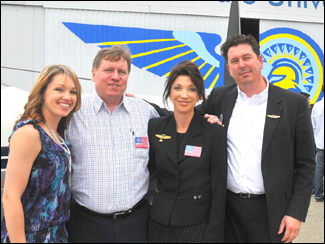 | |
Pictured here,left to right, are Michelle Bush, a recipient of the Jason Dahl Scholarship, and now an airline captain, fund president David Dosch, Sandy Dahl, and author Rob Quillen. |
Jason Dahl died on 9-11 along with his crew and passengers after terrorists took over the Boeing 767. The airliner crashed in a Pennsylvania farm field when passengers attempted to overpower the hijackers, preventing the terrorists from completing their suicide mission. Club members and their guests gathered at a downtown San Jose, California restaurant to hear how the fund's scholarships assist college and university students achieve careers in the aviation industry. The luncheon was followed by an open house and dedication of new facilities at the San Jose State University Aviation Department at nearby Reid-Hillview Airport, where Sandy Dahl spoke to the graduates and their families. Dahl was born in San Jose, learned to fly at Reid-Hillview Airport as a teenager, and in 1980, graduated from San Jose State's aviation program to move into a career as an airline pilot. Accompanying Sandy Dahl were foundation president David Dosch, a United captain and longtime friend of Jason Dahl, and author Rob Quillen, who met Dahl on a flight the day before 9-11, and has become active in foundation events. ACONE Enjoys Night at Boston Pops 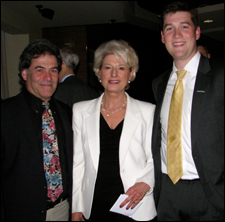 | |
Shown at the Boston Pops evening are (left to right) ACONE President Dan Schrager, ACONE Past President Georgia Pappas, and Chauncey Griffith. |
Aero Club of New England (ACONE) members and guests enjoyed a night at the Boston Pops on May 18, 2011, which featured renowned conductor Keith Lockhart. The Pops gave tribute to the music of Mardi Gras celebrations from around the world, including New Orleans and Rio de Janeiro. The night's performance featured pianist Charlie Albright and a swinging performance by the Dukes of Dixieland. The Dukes are the oldest continuing Dixieland jazz band with more than 37 years of jazz heritage from the heart of the Big Easy. ACONE members also enjoyed a pre-concert cocktail party hosted by member Chauncey Griffith. ACONE will honor Col. Eileen Collins, (Ret.) with the prestigious Godfrey L. Cabot Award on June 22, 2011 at the Harvard Club in Boston, Massachusetts. Collins, the first female shuttle pilot and shuttle commander, is being recognized for her many achievements in the space program. |
|
|
|
|
|
NAA June Luncheon
Tuesday, June 14
Featuring: Congressman
John Kline (R-MN)
Click here for details and registration
NAA July Luncheon
Wednesday, July 13
Featuring: Jim Albaugh, Executive Vice President of The Boeing Company and President and Chief Executive Officer of Boeing Commercial Airplanes
Click here for details and registration |
|
Brewer Trophy
Awarded for contributions to aviation education in the United States.
Due by July 31, 2011
Click here for details.
Elder Statesman
of Aviation
Awarded to senior Americans who have made contributions of significant value to aeronautics, and reflect credit upon America and themselves.
Due by July 31, 2011
Click here for details.
Wright Brothers
Memorial Trophy
Awarded to a living American for significant public service of enduring value to aviation in the United States.
Due by August 31, 2011
Click here for details. |
|
This month's featured member
organizations:
| |
Records Claimed
April 1-30, 2011 |
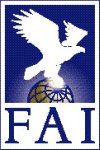
GLIDERS Speed Over a Triangular Course of 100 km: 75 mph Robert W. Spielman Class DU, Ultralight, General Windward Performance SparrowHawk Minden, NV 4/2/2011 Speed Over an Out and Return Course of 300 km: 91 mph Robert W. Spielman Class DU, Ultralight, General Windward Performance SparrowHawk Minden, NV 4/20/2011 Free Three Turnpoint Distance: 1,323 mi Gordon R. Boettger & Hugh M. Bennett Class DO, Open Class, Multiplace Schempp-Hirth Duo Discus Minden, NV 4/20/2011 Three Turnpoint Distance: 1,230 mi Gordon R. Boettger & Hugh M. Bennett Class DO, Open Class, Multiplace Schempp-Hirth Duo Discus Minden, NV 4/20/2011 |
This Month's
Air Sport Link
|
|

Apply now for an NAA Rewards VisaŽ Card. With every new account opened and every purchase made, a contribution will be made to NAA - at no additional cost to you! Support NAA and earn Rewards points towards cash back, air travel, merchandise, and more - all with no annual fee and a low annual percentage rate! Apply Now |
|